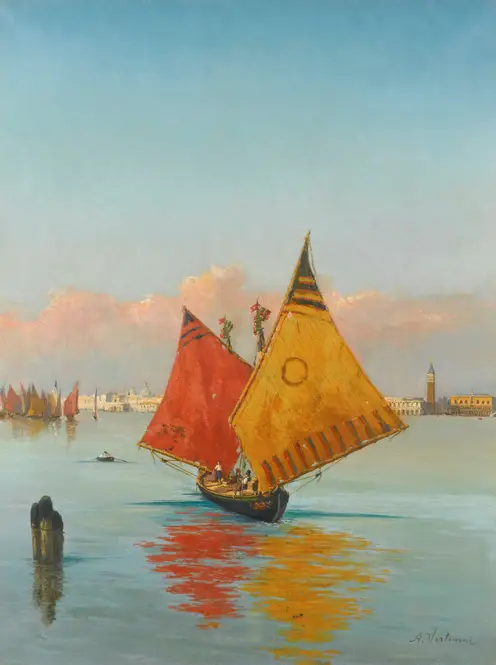Vincent van Gogh’s “Peasant Woman Binding Sheaves (After Millet)” captures the raw, unglamorous beauty of rural labor with thick, swirling brushstrokes that seem to pulse with life. The woman, bent over her work, becomes part of the golden field around her—her dress echoing the hues of the harvested grain. Van Gogh reimagines Jean-François Millet’s original composition through his own vibrant lens, transforming quiet dignity into something almost feverish with movement and emotion. You can almost feel the heat of the day in the yellows and oranges, the weight of the sheaves in her hands.
This wasn’t just a study of another artist’s work; it was van Gogh wrestling with themes that haunted him—the sacredness of toil, the connection between people and land. Look closely, and the painting thrums with contradictions: the woman’s exhaustion and her quiet strength, the chaos of the brushwork and the harmony of the scene. Even the sky feels alive, not as a passive backdrop but as another character in this drama of survival and seasons.

-full.webp)
-full.webp)

-full.webp)
-full.webp)

-full.webp)
-full.webp)
-full.webp)